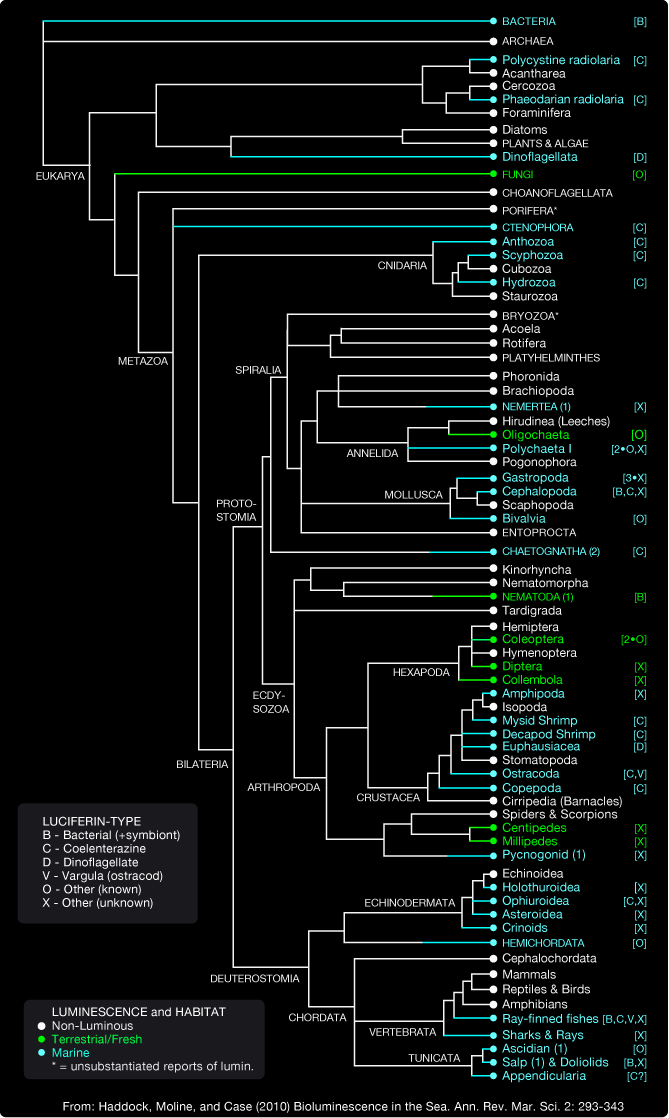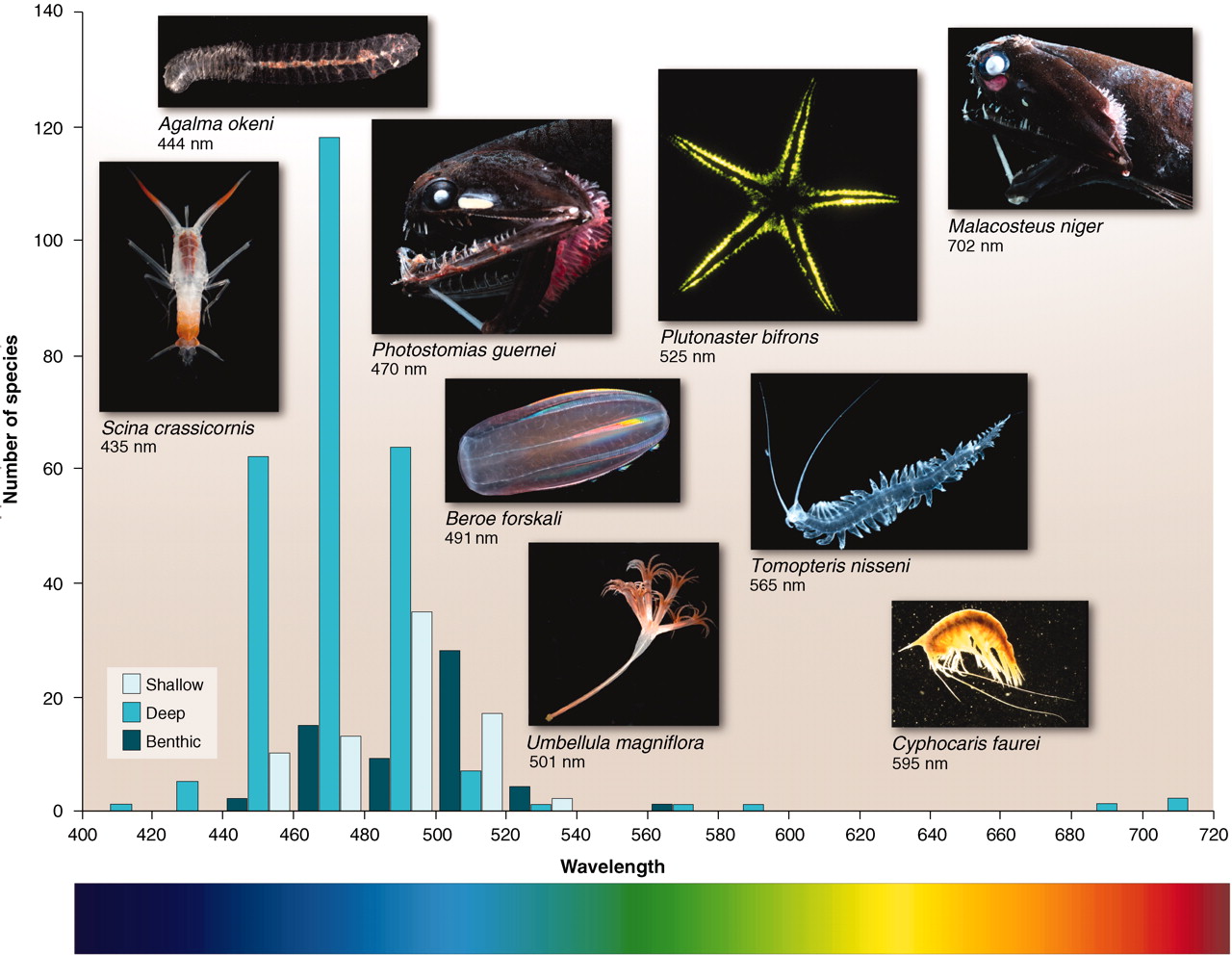Bioluminescence in the Deep Sea
Biology 342 Fall 2010
Author: Esther Ladizinsky
Phylogeny
Animals with the ability to bioluminesce come in a remarkably broad variety: from bacteria to fungi to sharks to centipedes, bioluminescent organisms can be found in just about any habitat. Given the extraordinary range of creatures, convergent evolution is plainly in play (1).  That this trait has arisen independently so many times (even more than the tree would indicate, as there are different bioluminescence mechanisms even within groups) is not only fascinating, but also indicative of its wide range of uses in nature—while it's thecookie-cutter shark's way of tricking a naïve meal, it's the copepod's way to avoid becoming one.
That this trait has arisen independently so many times (even more than the tree would indicate, as there are different bioluminescence mechanisms even within groups) is not only fascinating, but also indicative of its wide range of uses in nature—while it's thecookie-cutter shark's way of tricking a naïve meal, it's the copepod's way to avoid becoming one.
While bioluminescence is something of a novelty here on land, it is fairly prevalent in the sea; of the 40 phylogenetic groups that bioluminesce, only eight are terrestrial. Looking at the distribution of bioluminescence by zone (see Figure 2, below), it is clear that the deeper the zone, the greater number of luminous species. It's unsurprising that so many of those 40 are found in the deep sea: what more obvious signal could an animal produce than a burst of light in the complete abyss?
As far as genetic bases go, it's difficult to pinpoint a DNA phylogeny for bioluminescence: after all, the biological mechanisms that go toward producing it vary vastly. For systems that utilize Luciferin specifically (or its aquatic analog, coelenterazine), there is one fairly prevalent hypothesis, based on the fact that luciferin may not have originated for the purpose of light: cladistics would indicate that it may have initially functioned as a cell antioxidant (2). Indeed, the reaction behind its fireworks also serve to metabolize oxygen; further, there is some evidence that the luciferin reaction and its catalyst, luciferase, were originally not associated with each other (3)!
The phylogeny of symbiotic bioluminescence is also rather broad, encompassing not only the animals, but also the bacterial symbionts over all 40 luminescing phyla. And while most deep sea species utilize the symbiont Vibrio fischeri (Vibrio harveyi and Photobacterium phosphoreum are also common) they can develop these relationships quite independently of eachother and at different points in their evolution(4).
Figure 2: A distribution of bioluminescent species over light penetration by wavelength (shorter wavelengths indicative of deeper water). Different colored bars correspond to different sea zones.
..............................